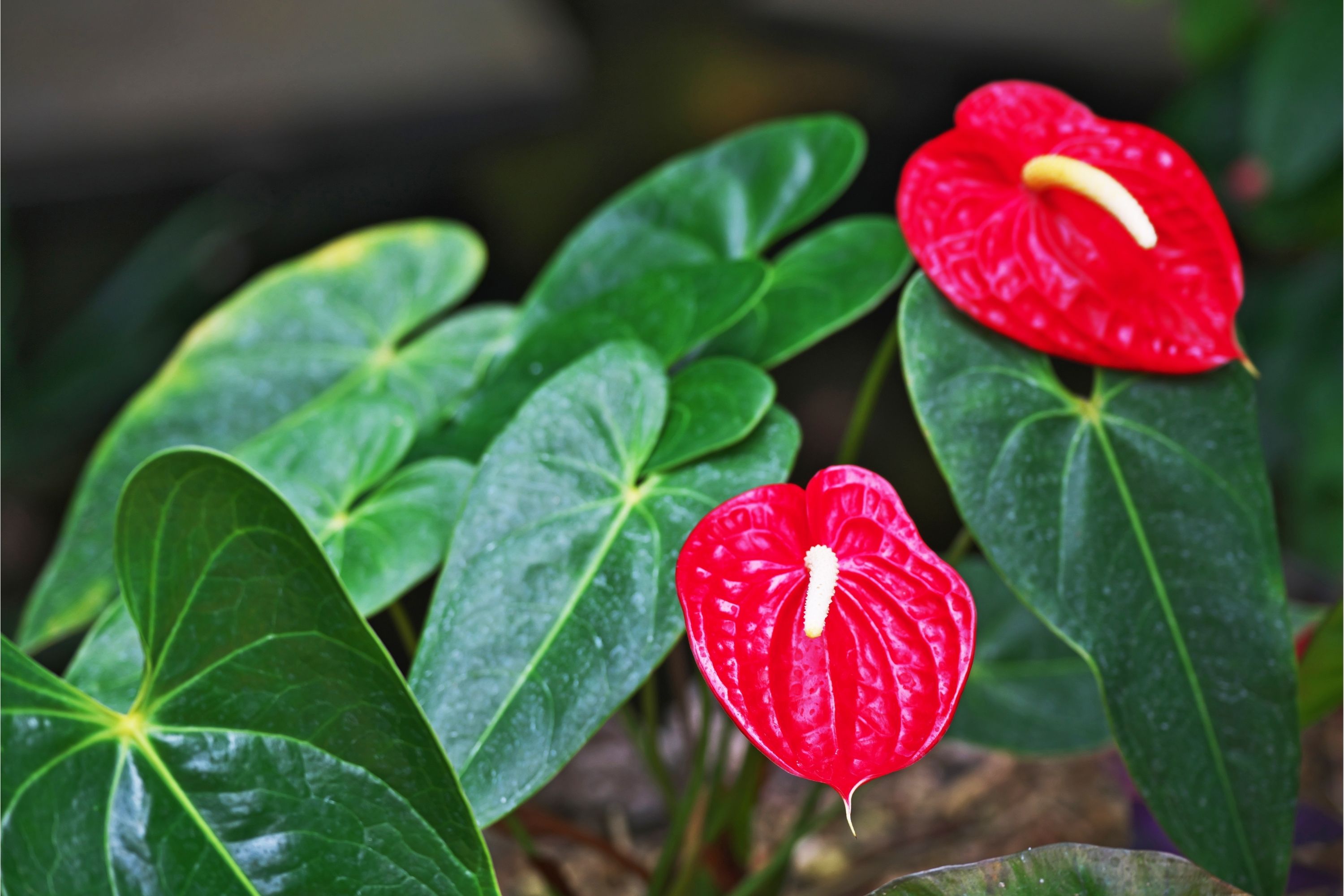Painter's palette
(Anthurium andraeanum)

Description
Anthurium andraeanum, commonly known as the flamingo flower or painter's palette, is a popular houseplant with striking, colorful blooms. It is native to Colombia and Ecuador, where it grows as an epiphyte, meaning it lives on other plants rather than in the soil. In this article, we will delve into the fascinating world of Anthurium andraeanum and provide a comprehensive overview of its botanical characteristics, growth requirements, propagation techniques, and common problems. Botanical Characteristics Anthurium andraeanum belongs to the Araceae family, which also includes other popular houseplants like the peace lily, snake plant, and philodendron. The genus Anthurium comprises over 800 species, most of which are native to tropical regions of the Americas. Anthurium andraeanum is a herbaceous perennial plant that grows up to 60 cm tall and 45 cm wide. It has glossy, heart-shaped leaves that can be up to 25 cm long and 15 cm wide. The leaves emerge from a central stem that produces a long, slender flower spike known as a spadix. The spadix is surrounded by a modified leaf called a spathe, which can be brightly colored and has a distinctive shape that resembles a painter's palette or a flamingo's head. The spathe and spadix together make up the plant's characteristic flower, which can be red, pink, white, or a combination of these colors. Growth Requirements Anthurium andraeanum is a relatively easy plant to care for, making it an excellent choice for both beginner and experienced gardeners. However, it does have some specific growth requirements that must be met for it to thrive. Light: Anthurium andraeanum prefers bright, indirect light. It can tolerate some direct sunlight, but too much can scorch the leaves and flowers. If the plant is not getting enough light, the leaves will become smaller, and the flower production will decrease. Temperature: Anthurium andraeanum prefers temperatures between 16°C to 27°C. It can tolerate cooler temperatures, but it will not grow as quickly. Avoid exposing the plant to temperatures below 10°C or above 35°C, as this can cause damage to the leaves and flowers. Humidity: Anthurium andraeanum thrives in high humidity. It can tolerate lower humidity levels, but this will cause the leaves to become dry and crispy. Consider using a humidifier or placing the plant on a tray filled with water and pebbles to increase humidity levels. Watering: Anthurium andraeanum prefers moist, but not waterlogged soil. Allow the top 2-3 cm of soil to dry out between waterings, and make sure the pot has drainage holes to prevent water from accumulating at the bottom. Soil: Anthurium andraeanum prefers well-draining, aerated soil that is rich in organic matter. A mix of peat moss, perlite, and bark is a good option. Avoid using soil that is heavy and clay-like, as this can cause waterlogging and root rot. Fertilizer: Anthurium andraeanum benefits from regular fertilization during the growing season. Use a balanced, water-soluble fertilizer every two weeks, following the instructions on the label. Propagation Techniques Anthurium andraeanum can be propagated through several methods, including division, stem cuttings, and seed. Division: Divide the plant during repotting by separating the roots into smaller sections, making sure each section has at least one healthy stem and root system. Stem cuttings: Cut a 10-15 cm stem with a few leaves and place it in a pot filled with a moist, well-draining soil mix. In conclusion, Anthurium andraeanum is a beautiful and popular tropical plant species that is widely grown for its strikingly beautiful flowers and lush foliage. This plant is relatively easy to care for and can be grown both indoors and outdoors, making it a versatile addition to any home or garden. With proper care, Anthurium andraeanum can provide years of beauty and enjoyment for plant lovers everywhere.
Taxonomic tree:







